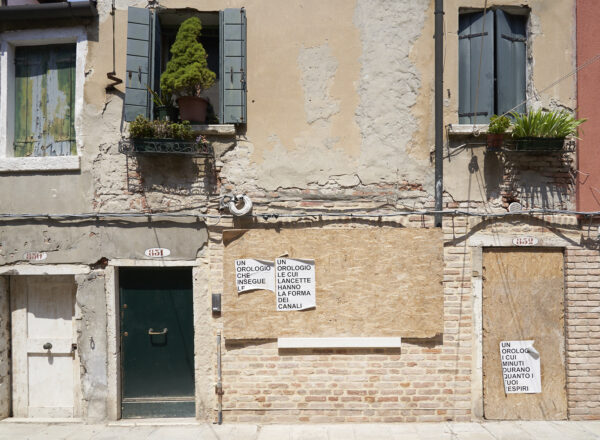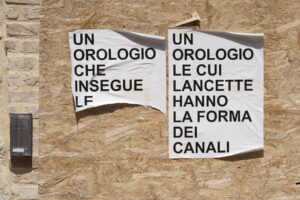


Work acquired in 2022
B.1981, David Horvitz lives and works in Los Angeles (United States).
He graduated in 2010 from Milton Avery School of the Arts at Bard College, New York.
He is represented by the ChertLüdde Gallery (Berlin).
David Horvitz is an artist whose interests constantly oscillate between publishing, exhibitions, and the internet. He therefore works with a variety of media, including photography, video, watercolour, mail art, text, and web.
Horvitz inscribes his practice within the context of networks, whether virtual or analogue, and his interventions, often simple and on an everyday basis, make it possible to underline the rationale behind communication and the spread of information. Proposals for Clocks (2016–) is part of the group of works exploring the relationship between travel and place, time and its standardization. The work consists of a series of six posters, containing a description of fantastical clocks. “A clock that falls asleep”, “A clock whose minutes correspond to the duration of each of your breaths” etc., Proposals for Clocks offers six ways of measuring the passage of time, albeit unrealistic or contradictory. The conception of time proposed by Horvitz’s clocks is in fact, purely subjective, connected to specific places or facts, and goes against both the infinite environment in which the events that make up our supposed great History follow one another, and to the standardized temporality and unspecified locations propagated via social media such as Instagram. The artist’s proposals show us that time is neither insignificant nor plastic, but above all relative.
Proposals for Clocks was presented in the public space in Venice during 435 Ponti e qualche scorciatoia [435 Bridges and some shortcuts], the second part of the 3 Easy Pieces series, and on this occasion, the posters were pasted at random on the city’s walls. For future presentations, the posters will be reprinted, and the descriptions translated according to the language of the country where the work will be displayed.
